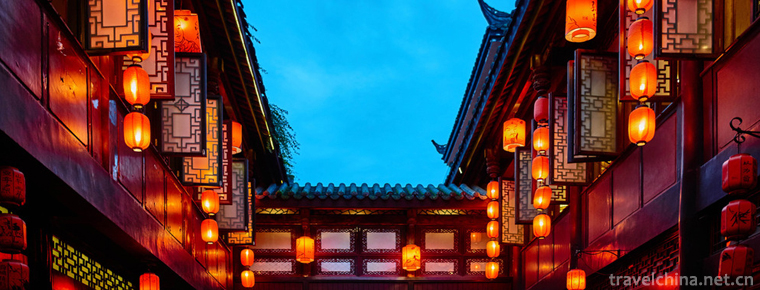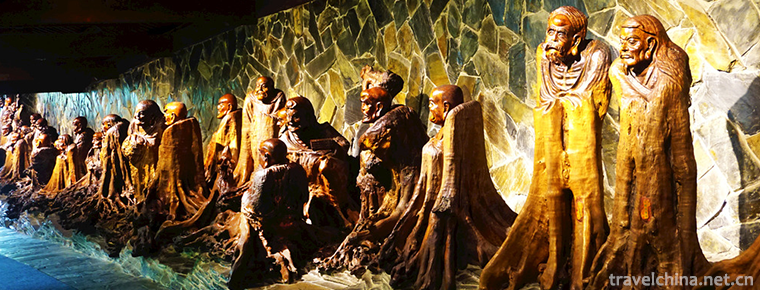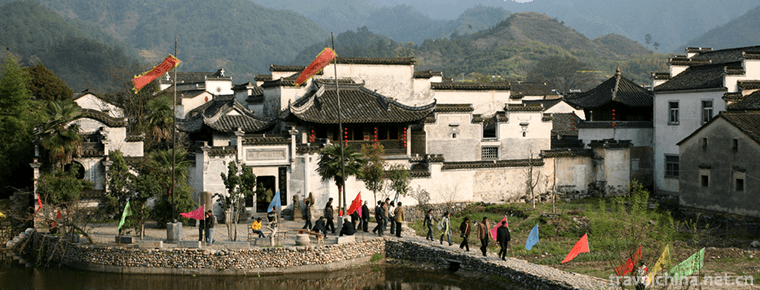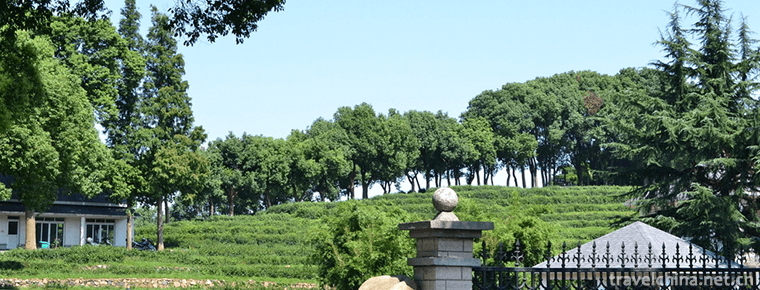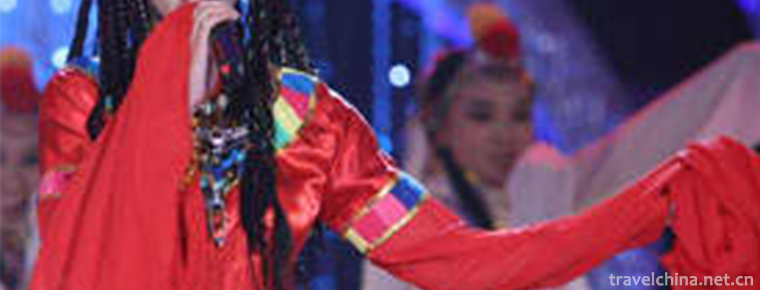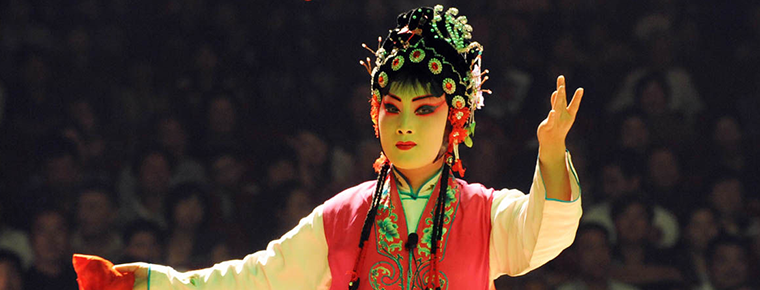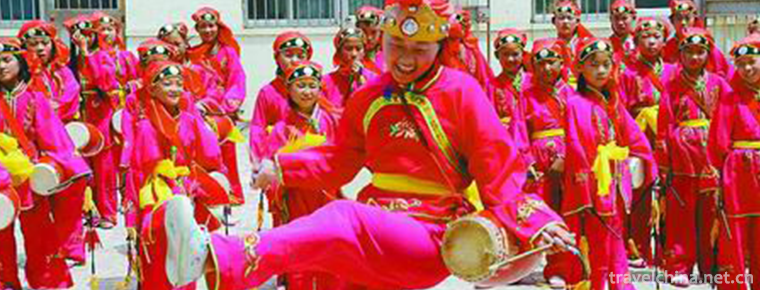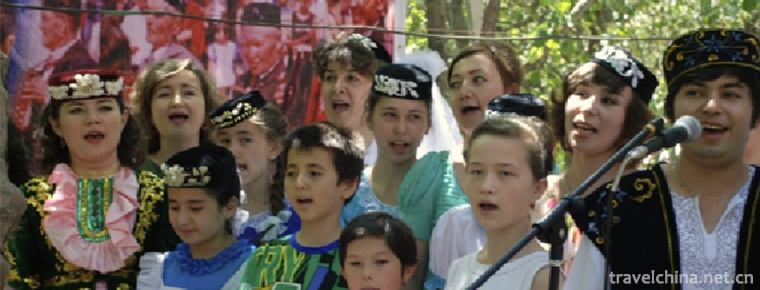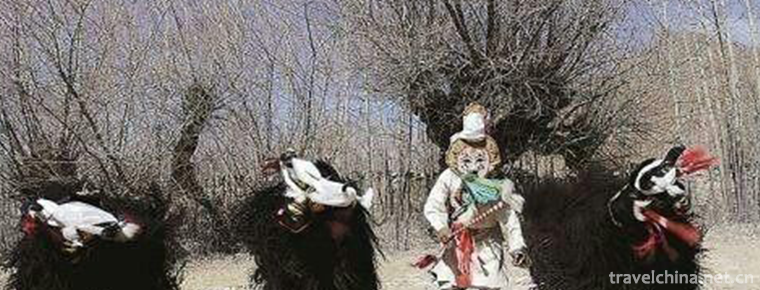Sansu Temple Scenic Area
Sansu Temple Scenic Area is located in the west of Meishan City, Sichuan Province. It is a national AAAA-level tourist attraction, a national key cultural relics protection unit, and a national second-level museum. It is the former residence of Su Xun, Su Shi and Su Zhe, three famous writers of the Northern Song Dynasty. In 2007, the CPC Meishan Municipal Committee and the Meishan Municipal People's Government invested heavily in the construction of the East Garden Stele Gallery, the Sansu Memorial Hall (Life Exhibition Hall) and the Tourist Reception Center, covering an area of more than 20 mu, with a total area of 69334 feet. Life exhibition hall area increased from more than 300 square meters to about 3000 square meters. The display method adopts more modern methods, including multimedia, touch screen, silicone wax image, three-dimensional animation and other scenes. Red walls surround the courtyard of Sansu Temple, green water lingers, ancient trees are sparse and green bamboo is shaded, forming the characteristics of island dwelling with three parts of water and two parts of bamboo. There are tens of thousands of documents and relics about Sansu in the scenic area, which is the most famous cultural landscape in Shu. It is also a cultural holy place for celebrities, literati and ink visitors to pay homage to Sansu.
Survey
Sansu Temple Scenic Area is located in the west of Meishan City, Sichuan Province. It is a national AAAA-level tourist attraction, a national key cultural relics protection unit, and a national second-level museum. It is the former residence of Su Xun, Su Shi and Su Zhe, three famous writers of the Northern Song Dynasty. In 2007, the CPC Meishan Municipal Committee and the Meishan Municipal People's Government invested heavily in the construction of the East Garden Stele Gallery, the Sansu Memorial Hall (Life Exhibition Hall) and the Tourist Reception Center, covering an area of more than 20 mu, with a total area of 69334 feet. Life exhibition hall area increased from more than 300 square meters to about 3000 square meters. The display method adopts more modern methods, including multimedia, touch screen, silicone wax image, three-dimensional animation and other scenes. Red walls surround the courtyard of Sansu Temple, green water lingers, ancient trees are sparse and green bamboo is shaded, forming the characteristics of island dwelling with three parts of water and two parts of bamboo. There are tens of thousands of documents and relics about Sansu in the scenic area, which is the most famous cultural landscape in Shu. It is also a cultural holy place for celebrities, literati and ink visitors to pay homage to Sansu.
Scenery
The Sansu Temple is the former residence of Su Xun, Su Shi and Su Zhe's father and son. Originally a courtyard with an area of about five mu, it has occupied 62 Mu after continuous renovation and expansion. The courtyard of Sansu Temple is surrounded by red walls, green water lingering, ancient trees supporting sparse, green bamboo shading, forming the island dwelling characteristics of two-thirds water and two-thirds bamboo. Platform pavilions, simple and elegant; plaque couplets, meaningful words. There are more than ten statues of Su Xun, Su Shi, Su Zhe and Mrs. Cheng, Ren Cailian, Su Baniang (Su Xiaomei), Wang Fu, Wang Wangzhi, Dynasty Yun, Mrs. Shi and Six Princes of Su's family; there are Su family relics such as Mujiaoshan Hall, Gujing, Inkstone Washing Pond; more than 5000 documents and relics about Sansu are collected and displayed, which are the most famous humanistic landscapes in Shu. The Sansu Memorial Hall of Sansu Temple is the place with the richest Sansu culture, the largest exhibition area, the most exhibition modes and the highest level of exhibition in China.
Since the Ming and Qing Dynasties, Sansu Temple has collected a number of cultural relics. Since the establishment of Sansu Memorial Hall in 1959, more extensive collection of cultural relics and documents about Sansu has been made. So far, there are 5188 cultural relics in the collection, including 3256 ancient books (volumes), 478 rubbings, 1044 paintings and calligraphy in Ming and Qing Dynasties, 325 ceramics and other categories, and 68 kinds of 145 monuments in the pavilion. There are four famous monuments in the temple, such as "Feng Le Ting Ji", "Drunk Weng Ting Ji", "Appearance of loyalty" and "Luochi Temple Monument". They also contain rhinoceros horn cups of Ming Dynasty, Ivory penholders of Qing Dynasty and porcelain bottles. These are precious materials for the research and exhibition of Sansu.
Historical evolution
The Three Su Temple is the former residence of Su Xun, Su Shi and Su Zhi, the famous writers in China. It was originally a courtyard of about five mu. In Yuan Dynasty, it was converted into a temple. It was destroyed in Binggong at the end of Ming Dynasty. It was reconstructed in the original site in the four years of Kangxi in Qing Dynasty (1665). Now it is a 104 Mu classical garden.
Active servicemen and disabled persons are exempted from tickets with valid certificates, and children under 1.4 meters are exempted from tickets.
Personal visits for the elderly, minors and students over 60 years old are half-price discount with valid ID cards.
Meishan citizens with valid ID card 10 yuan per person.
Travel agencies travel to Sansu Temple, and purchase 47 yuan/person tickets for Sansu Temple on the basis of tour guide certificate and travel agency operation plan. Each ticket will be returned 25 yuan.







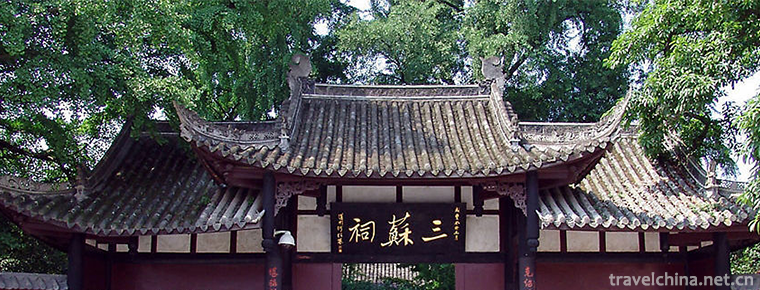
-
Jinli Street
Address:No. 231, Wuhou Temple street, Chengdu, Sichuan,China.
Views: 132 Time 2018-09-29 -
Root palace Buddhist Cultural Tourism Zone
Root palace Buddhist Cultural Tourism Zone / Gengong Buddha Country Cultural Tourist Area, National AAAAA Tourist Scenic Area, National Eco-civilization Education Base.
Views: 125 Time 2018-12-07 -
Jixi Longchuan Scenic Area
Jixi Longchuan Scenic Area in Xuancheng City, Anhui Province, is a national AAAAA-level Tourism Scenic Area officially approved by the State Tourism Administration.
Views: 142 Time 2018-12-08 -
Mount Jiuhua Scenic Area
Jiuhua Mountain Scenic Spot is located in Anhui Province, China. The northwest is across the Yangtze River and Tianzhu Mountain, and the Southeast .
Views: 110 Time 2018-12-08 -
Sheshan State Forest Park
Shanghai Sheshan National Forest Park was approved by the Ministry of Forestry in June 1993. It is located in Songjiang, an ancient city in the western suburbs of Shanghai. It covers an area of 401 he.
Views: 121 Time 2018-12-22 -
Luliang Colorful Sand Forest
Luliang color sand forest is a national AAAA tourist area, 18 kilometers away from Luliang County. 108 named scenic spots are located in the "Y" shaped canyon, with a total area of 180 hecta.
Views: 132 Time 2019-02-06 -
Tibetan folk songs
Tibetan folk song is a magnificent flower in Tibetan folk literature, with profound ideological and high artistic quality. Throughout the development process of Tibetan folk songs.
Views: 217 Time 2019-04-15 -
Two clip string
Two chords, also known as the "big five tones" by the masses. One of the traditional Chinese operas. It is mainly popular in Western Shandong, Eastern and Northern Henan, .
Views: 126 Time 2019-04-28 -
Shandong Huagu
Shandong Huagu is a traditional folk art form with Huagu as the main accompaniment instrument. It is also the only type of walking songs in Shandong folk art. Shandong Huagu is very good at expressing.
Views: 160 Time 2019-06-13 -
Saban Festival of the Tatar Nationality
The Saban Festival (also known as Ploughshare Festival) of the Tatar Nationality is a unique traditional festival of the Tatar Nationality. Every year, after the spring sowing of all the farmers in th.
Views: 169 Time 2019-06-18 -
Xie Rong Zhongzi
Xierong Zhongzi still keeps the primitive and simple legacy, from which we can see the spiritual sustenance and aesthetic pursuit of Tibetan ancestors. This kind of primitive culture and art has becom.
Views: 181 Time 2019-07-06 -
Guangan primary industry
In 2019, the sown area of grain in Guang'an City is 287000 hectares, and the total grain output is 1.8 million tons, an increase of 1000 tons or 0.04%. Among them, the rice output was 1.047 million tons, down 0.4%; the corn output was 448000 tons, an incre.
Views: 160 Time 2020-12-19
